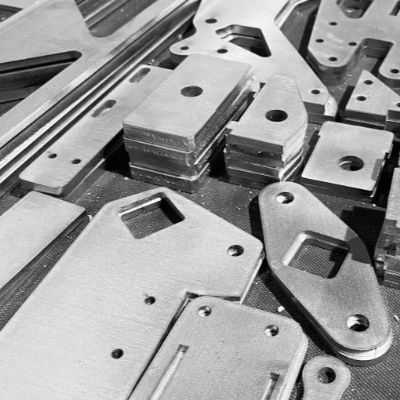Nesting Software Keeps Pace with Metalformers' Needs
February 1, 2018Comments
Upgrades at two European manufacturers improve run times, reduce waste and increase efficiencies.
What began decades ago—shortly after the use of computer numerical control (CNC) for cutting machines and personal computers became prevalent industrywide—is now a major factor contributing to increasing material and operating efficiencies by sheetmetal fabricators worldwide. It’s nesting software, and in some ways, metalforming and nesting are evolving together throughout the world.
Take for example, Teistungen, Germany-based Ribo Blechbearbeitung GmbH, a manufacturer of made-to-order retail outfitting products such as food carts and display systems, which committed to nesting in 2001 when the majority of its business was large volumes of single parts. The company used single-component automatic processing and nesting software features from Jetcam International s.a.r.l., Monaco, to automatically tool and nest parts. 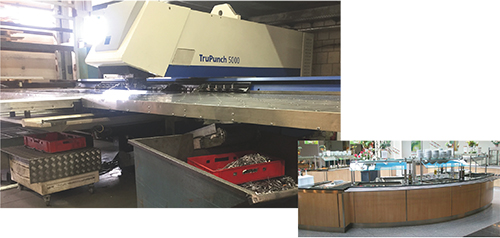
Common-line cutting and punching helped reduce material waste while improving machine runtime to 20 percent for Ribo Blechbearbeitung, a German manufacturer of food carts and display systems.
Since then, Ribo has benefitted from several Jetcam software enhancements, including the 2009 addition of remnant-sheet management, allowing Ribo to add all of its remnants into the material-stock database automatically, for easy identification and reuse. Common cutting and punching also has helped to reduce material waste while optimizing machine runtime, enabling Ribo to run two shifts instead of three to meet production requirements.
Over time, Ribo’s business has become more diverse, says Raik Klingebiel, CNC programmer for the company. “We changed from series production to small volumes and even one-offs of complex components. As a result, we needed to find a way to program more parts quickly and to nest dissimilar parts to mix orders.”
Finding Efficient Nest Patterns
In 2011, Ribo purchased Jetcam’s free-form high-performance nesting module for finding efficient nest patterns over a predetermined time period. Klingebiel says the addition of this module helped decrease waste by 10 percent, with even fewer remnants being created. “Previously, we could end up with dozens of remnants across each order,” he says. “Now, only the last nest of each material might contain a remnant.” 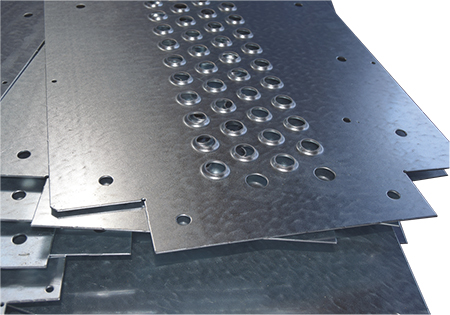
The Tool Teach feature allows Jetcam software to learn complex tooling for new parts at HC Coils, a U.K.-based manufacturer of heat-exchanger products. Shown is a collar-punched coil-tube plate.
The software also allows Ribo to store multiple revisions for components, reducing the likelihood of making older part versions by mistake. The time-saving Tool Teach feature allows the software to learn complex tool placement for future and similar part geometries. The software’s ability to store tooling logic benefitted Ribo as it changed machines multiple times before arriving at its current setup: a Trumpf 5000 punching machine and a Trumpf L3030 laser-cutting machine with a Trumalift SheetMaster load/ unload handling system. Using single-component automatic processing, Ribo was able to automatically re-import and retool the components for the new machines. “We had some 33,000 nests for the punch and 20,000 for the laser,” notes Klingebiel. “We were able to have the system process the files we needed to retool overnight, and they were ready the next day.”
In 2014, Jetcam released what Klingebiel says was “a godsend”—automatic sheet processing, which can apply tooling and skeleton- destruction logic to the entire sheet with a single mouse click. “This provided us with the luxury of being able to pick either the punch or laser,” he says. “We can decide which parts are cut on which machine based on their complexity and then tool the entire nest with a single click. I’ve found it to be almost 100-percent accurate, and any tooling issues are easy to rectify.”
Finally, in 2016 Ribo improved its automation of CAD import and ordering of components with Jetcam Orders Controller (JOC). “The switch from the old system to JOC should not be underestimated,” says Klingebiel. “It wasn’t one step up, it was five steps up. Previously we’d import our DXFs, send them to the order-management system, manually enter amounts and then split them between cutting technologies. With JOC, we simply import a single CSV file with all of our parts and send it for processing. JOC creates component files and nests them. One of our products—a food cart—has 45 sheetmetal parts. Previously it would have taken me 3.5 hr. to process them. Now they’re done in 90 min.”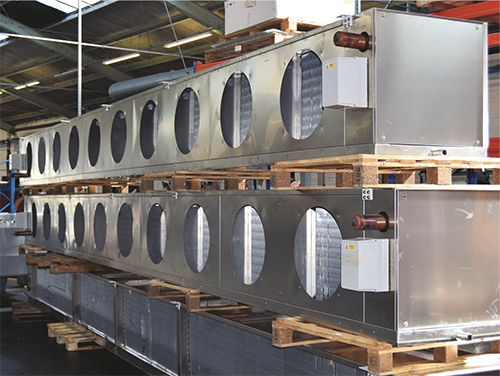
Programming time at HC Coils dropped 85 percent, enabling a day’s worth of nests to be programmed in less than an hour. Shown are aluminium-cased low-profile coolers waiting for fans to be fitted.
United Kingdom Success
For HC Coils Ltd., Gosport, United Kingdom, a manufacturer of heat-exchanger products, the decision to upgrade its nesting software came in 2010. The company was using a CAM system for its punch presses, but was experiencing issues, recalls John Yeomanson, drawing office manager. “We had no automatic nesting then,” he says, “meaning that I had to employ someone all day to literally play ‘Tetris’ to lay up nests.”
Once HC Coils began looking at nesting possibilities, it found Jetcam software had the functionality and ease-of-use it was looking for. Like Ribo in Germany, HC Coils opted for Jetcam with free-form nesting along with JOC. Installation and training took just two days for both machines, Yeomanson recalls, adding that “it was easy to pick up how to use the software.”
HC Coils had several thousand components that needed to be imported into Jetcam using its Single Component Automatic Processing (SCAP). All of the original DXF files were placed in a folder, which SCAP automatically processed, creating component files and placing tooling automatically, so that all of the parts were ready for nesting on either of the company’s punching machines, Yeomanson explains. “SCAP is generally better at tooling parts than an operator might be,” he says. “We even accidentally discovered a better way of punching our fan plates.”
HC Coils also benefitted from the Tool Teach mode. “We use it on form tools,” says Yeomanson. “Without it, many of our parts would be much more difficult to make. Every job has at least two of the form-tool plates, which are automatically tooled with Tool Teach.”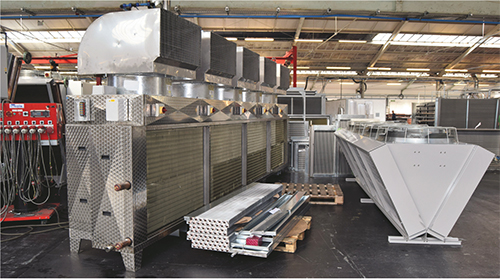
Jetcam Orders Controller simplifies ordering of parts and assemblies at HC Coils.
Once parts are created, HC Coils uses JOC to structure assemblies and create order lists. Complex assembly structures can be created by dragging and dropping components, specifying their quantity and, where relevant, revision number. For automatic nesting, Jetcam creates worksheets in the orders screen, and operators drag components or complete assemblies onto the worksheets. CSV files of components also can be imported to populate the orders lists quickly.
With the combination of automatic tooling and nesting in Jetcam, and the ability to quickly order components, programming time was reduced by approximately 85 percent. “We program a full day of production in less than an hour,” says Yeomanson. “With JOC, any of our staff with 20 minutes of training can produce a nest file.”
Other features, such as remnant-sheet management and common-line punching, provide additional benefits. Remnants are created easily during nesting and then reselected for orders, reducing material wastage. Common-line punching further decreased waste material by using a single cut to separate parts rather than leaving a skeleton between them. Nests also take less time to run.
In 2012, two years after implementing Jetcam, HC Coils replaced its aging punch presses with an Amada EM 2510 with sheet loader. This change simply called for a replacement postprocessor, installed in one day. To minimize downtime during the transition, HC Coils used SCAP to retool components.
Looking ahead, Yeomanson says the Jetcam software allows for extra capacity as HC Coils’ turnover continues to increase. “And with the savings in programming time alone, the system easily paid for itself,” he says. “We would not be able to manufacture the amount of products we’re making now with the previous system.” MF
View Glossary of Metalforming Terms
Technologies: Fabrication, Management, Software
Comments
Must be logged in to post a comment. Sign in or Create an Account
There are no comments posted.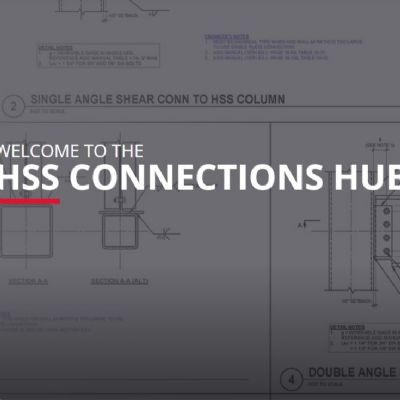 Software
SoftwareAtlas Tube Unveils HSS Connections Hub for Structural Engine...
Thursday, April 3, 2025
 Software
SoftwareSandvik Set to Acquire Verisurf
Tuesday, March 11, 2025







